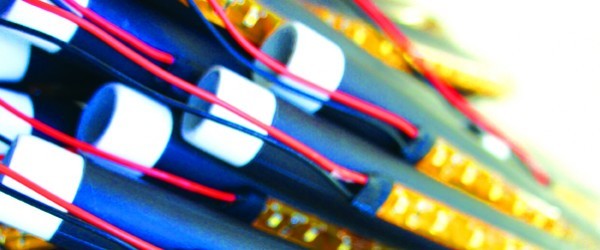The Time Keeper

Time Keeper Installations
"Shadows" by Anna Frants
A Subjective Concept of "Time"
In Anna Frants', "Shadows", viewers are followed by a projected human shadow not their own. Dislocated from a physical moment, place or person, the shadow of a figure still remains obligatorily familiar in the memory of every viewer. Given the faintest whisp of a projecting floating image - a shadow by association -the viewers subconsciously connect to a reality existing elsewhere, projecting their own memories to complete the picture and comprehend the experience. This communal act of conjuring what is not overtly provided induces a kind of autonomous kinship. Viewers share the need for comfort and categorize or compartmentalize this new experience by comparing and contrasting it with previous interactions. They share an utterly personal yet universal memory of encountering a shadow that does not exist in this "Time".
The definition of physical "Time" in Frants' installation goes through an evolution process within the viewer. The viewer enters with a fixed sense of place/ day/ hour and then abandons the quantitative variables delineating that setting in order to assign a decontextualized image meaning. Ultimately the viewer comes to a share an interpretation of a familiar yet entirely nonexistent, projected reality. "Time" definitively is subjective in this artwork. The perpetually abstract concept of time is illustrated as visitors fleetingly grasp, exchange, reconsider and justify their internal awareness of "Time".
Frants uses New Media to create a synthetic environment where viewers must reflect and contribute to what is around them -an act which would be a step towards conceiving a future.
"Breathless" by Alexandra Dementieva
An Objective Concept of "Time"
"Breathless" – an installation by Alexandra Dementieva consists of three light objects. Two of them are connected to the RSS [web] feed via computer, and the third, with the aid of the airspeed and sound sensors, provides wind and noise of street (environment).
Computer searches for all words, related to the concept "of fear" (for first sculpture) and "desire" (for the second) in the RSS. The more such words appear, the brighter are the object's LEDs, progressing from the base of object to the top. The third object is based on the same principle.
Spectator can walk inside the actual construction, where additional airspeed sensor is located. When he blows on it, the pattern of illumination changes. This minimalistic installation is linked to the elements of the presence: man, the indicator of the vital activity in the form of expiration, and the lighting system, which reflects world and natural processes. This new interpretation of standard interrelations between these physical components transforms the unconscious fact of existence in space into the physical representation of interaction.
In this installation the brightness of lights is relative to the force and duration of exhalation. The spectator is given an opportunity [method] to express the act of breathing in the visible light – quantifying the invisible air and making each breath an act of will. This juxtaposition of spectator, breathing and light forces our brain to observe the obvious, which is normally ignored.
The installation, "Breathless" is a metaphor illuminating parallels between ideas of light and dark, physical and metaphysical, unconscious and conscious, life and death, finite and infinite. Symbolically, the installation illustrates the reflexive relationships that define "Time" as an abstract concept. This installation places the viewer as the active agent in a social and intellectual commentary on human behavior. Dementieva's perspective of "Time" is drawn from and shared by objective observation of physical interactions.
"Glaz-Maton" by Arnaud Jacobs
Sounds of "Time"
In Arnaud Jacobs's, instrument has a very strong connotation and is often used/perceived in our culture as a reference to childhood. It is a toy we bring from our childhood and can easily generate memories from the past. It is part of us and the collective memory.
He is also fascinated by the technologies of the musical box. For example, the box around the mechanics of the instrument is used as a hedge to amplify sounds in a natural way without electronics. It is an acoustic resonator. By removing the 'box' it is interesting to perceive how different this instrument can sound. Using other different materials as a resonator demonstrates how sound and the physical properties of materials directly affect each other.
The Glaz-Maton comprises of several prepared musical boxes and a specially designed tool for data recognition. The mechanics of the music boxes was modified. A motor is used to drive each musical box and the comb has been stripped so that there is just one note per music box playing. Each music box has been prepared to sound differently. A mini version of Cage's "prepared pianos".
The melody is unique for each visitor, because they are a sonorous synthesis of a biometric snapshot of the visitor. Glaz-Maton is a 'personal' instrument. It registers in an objective manner the subjective state of mind of the beholder. The tool that captures the physiologic data, is an instrument that was specially designed and fits ergonomically in the hand of the visitor.
The snapshot that is taken registers 3 attributes of the visitor; colors of the iris, the heartbeat rate and the humidity of the hands. This data is synthesized into unique melody. The iris reader determines the pitch of notes, a tool for tracking the heartbeat rate modifies the tempo, the humidity sends the pauses between the notes.
Opening: Thursday June, 7th
18:00-22:00
Opening hours:
Wed-Sun, 12:00-18:00
Exceptionally closed on Wed. 13 June!
Free entrance!
Group visits
02 410 30 93
info@imal.org
Location: iMAL
30 Koolmijnenkaai - quai des Charbonnages
1080 Brussels, BE
An archive : 1999-2010-2019
This page is an archive of the iMAL website that operated between 2010 and 2019. It compiles activities and projects made since 1999.
For our most recent news and activities, please check our new website at https://imal.org
